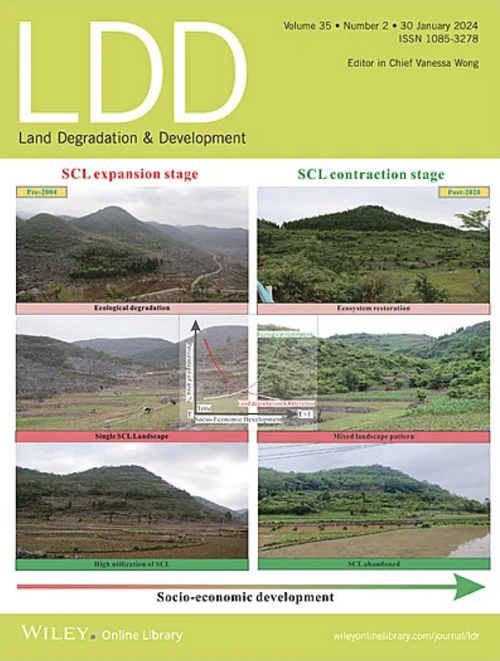Peat and Liquid Organic Fertilizer Promoted Kiwifruit Performance by Modifying Rhizosphere Soil Physicochemical and Microbial Properties
IF 3.6
2区 农林科学
Q2 ENVIRONMENTAL SCIENCES
引用次数: 0
Abstract
Applications of peat and liquid organic fertilizer enhance soil physicochemical properties and modulate microbial community composition. Rhizosphere soil microorganisms play pivotal roles in mediating plant growth dynamics. Nevertheless, the effects of peat and liquid organic fertilizer amendments on growth performance and associated microbial regulation mechanisms in kiwifruit production systems remain poorly elucidated. This study investigated the rhizosphere soil physicochemical and microbiological traits, together with kiwifruit plant traits, following a gradient of peat application ranging from 0% to 25%, combined with two fertilization strategies (chemical fertilizer and liquid organic fertilizer). Results showed that compared to fertilizers, the effects of peat on soil physicochemical traits were more pronounced, for example, enhancement of soil organic matter, total carbon, available nitrogen and available phosphorus content, moisture, reduction of pH, and bulk density. Combined utilization of liquid organic fertilizer and 25% peat enhanced soil catalase, urease, and acid phosphatase activities by 30.8%, 46.3%, and 67.5%, respectively, compared to the control. High‐dose peat application can also significantly elevate soil phospholipid fatty acid content, especially eukaryotes. Sequencing results showed that fertilization practices and peat did not noticeably impact soil bacterial and fungal diversity. The application of 12.5% peat resulted in a higher number of soil microbial network links and a more complex network, while liquid organic fertilizer also increased the number of network links and the average clustering coefficient. Notably, the number of keystone taxa elevated with the increase of peat application. Finally, peat enhanced plant height and root activity, with liquid organic fertilizer significantly increasing root activity compared to the control and chemical fertilizer. Based on the above findings, the utilization of peat and liquid organic fertilizer can improve soil physicochemical properties, thereby enhancing soil enzyme activity and microbial abundance, adjusting the composition and interaction patterns of the microbiome, and ultimately promoting kiwifruit growth. Nevertheless, the effects of peat and liquid organic fertilizer in field trials should be explored in the future.求助全文
约1分钟内获得全文
求助全文
来源期刊

Land Degradation & Development
农林科学-环境科学
CiteScore
7.70
自引率
8.50%
发文量
379
审稿时长
5.5 months
期刊介绍:
Land Degradation & Development is an international journal which seeks to promote rational study of the recognition, monitoring, control and rehabilitation of degradation in terrestrial environments. The journal focuses on:
- what land degradation is;
- what causes land degradation;
- the impacts of land degradation
- the scale of land degradation;
- the history, current status or future trends of land degradation;
- avoidance, mitigation and control of land degradation;
- remedial actions to rehabilitate or restore degraded land;
- sustainable land management.
 求助内容:
求助内容: 应助结果提醒方式:
应助结果提醒方式:


